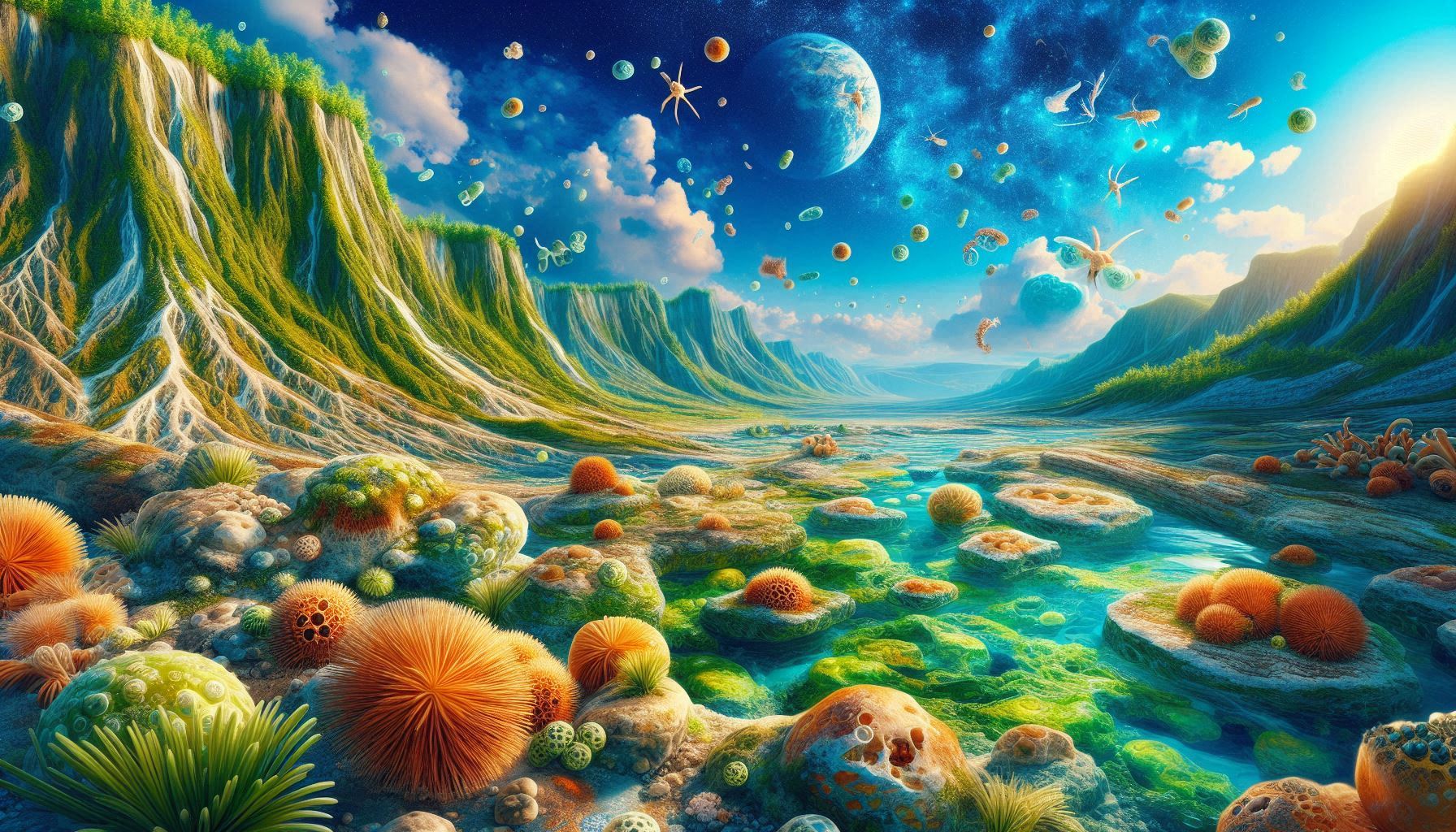While researching photosynthesis, I discovered that algae called cyanobacteria were the first organisms on Earth to perform photosynthesis and produce oxygen. There are various theories, but it seems that traces of cyanobacteria have been found in rocks from 3.7 billion years ago. Apparently, striped structures made of sediments held in place by the mucus of cyanobacteria, called stromatolites, were discovered. It’s amazing that it took more than a billion years to form.
https://www.natureasia.com/ja-jp/ndigest/v13/n11/
In the early Earth’s atmosphere, there was only about one millionth of the oxygen we have today, and it was mainly composed of water vapor, carbon dioxide, and nitrogen. Gradually, cyanobacteria in the ocean began photosynthesis, producing oxygen, which initially oxidized iron in the ocean to produce iron oxide. This iron oxide absorbs blue light from ultraviolet rays, while water absorbs red light and reflects the unabsorbed green light, which is why the ocean was green at the time.
https://www.isct.ac.jp/ja/news/k4le4oaiw0a2
Plants use a pigment called chlorophyll for photosynthesis, which absorbs blue and red light and reflects green, so plants appear green, but if the ocean is green, it means that there is less light available for photosynthesis. Therefore, there is a theory that the cyanobacteria of the time used a pigment called bilin to absorb green light as well, allowing it to be used for photosynthesis. Cyanobacteria have an incredible ability to adapt.
The iron oxide that was produced sank to the bottom of the ocean, becoming banded iron deposits and turning into iron ore. Iron ore is the result of photosynthesis by cyanobacteria. It’s amazing how the activity of living organisms turns into ore.
https://www.toyaku.ac.jp/lifescience/departments/applife/knowledge/article-026.html
Then, 2.5 to 2.3 billion years ago, a large release of oxygen called the Great Oxidation Event caused the oxygen concentration to rise to about one-tenth of the current level. Apparently, 10 to 20 times the current amount of oxygen was supplied to the atmosphere over hundreds of millions of years. As a result of the increase in oxygen, ozone was also produced, and the ozone layer was formed, protecting the earth’s surface from ultraviolet rays.
https://photosyn.jp/pwiki/index.php
Even now, 50% of the Earth’s oxygen is produced by cyanobacteria in the ocean, so cyanobacteria are important for all life on Earth. Cyanobacteria are amazing, they produce oxygen, the ozone layer, and iron ore, and they are ancient organisms. The history of the Earth is amazing.


